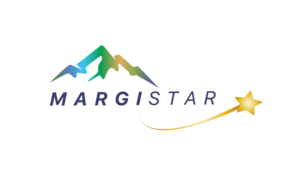By Dr Laura Boffi (Università Ca’ Foscari Venezia)
Dr Laura Boffi is an interaction design researcher and practitioner with a background in product design. She just completed a one-year research fellowship at the Università Ca’ Foscari Venezia in Italy. In this blog, Laura delves into a participatory project focused on biodiversity conservation and local agropastoral traditions, which was inspired by her conversations with a local shepherd in Abruzzo, Italy.
Abruzzo boasts the highest percentage of protected areas (30%) in Europe, encompassing both natural environments and anthropic ecosystems, including pastures. The landscapes and biodiversity of the region are intricately intertwined with its traditional agropastoral activities, which, unfortunately, have gradually declined over the years.
During my recent fieldwork with contemporary farmers and shepherds, I uncovered a small group of young adults who have chosen to return to the mountains to revive traditional sheep herding and farming practices. Their motivation lies in re-establishing sustainable practices and reconnecting with nature. It was during discussions with one such shepherd, Angiolina, that I experienced a pivotal moment in my research journey. Her insights and passion inspired me to initiate an experimental project in Abruzzo.
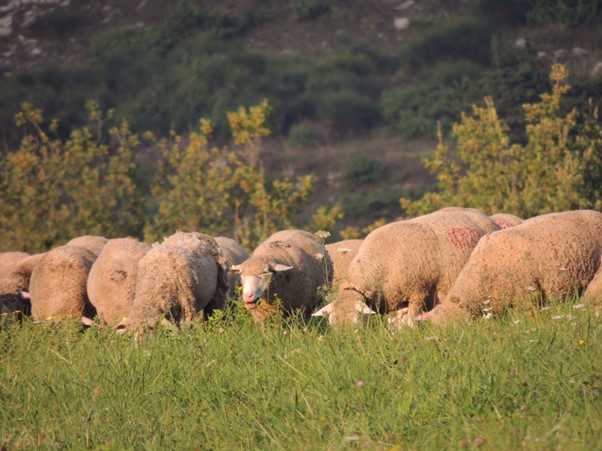
Angiolina’s herd
Angiolina’s family had a long-standing tradition of sheep herding. She decided to carry on this ancestral practice and embarked on a journey to become a shepherd, just like her forebears. As she began to lead her sheep back to the mountainous pastures, she encountered a challenge: the need to repair and maintain deteriorating troughs that had suffered from the ravages of time and neglect.
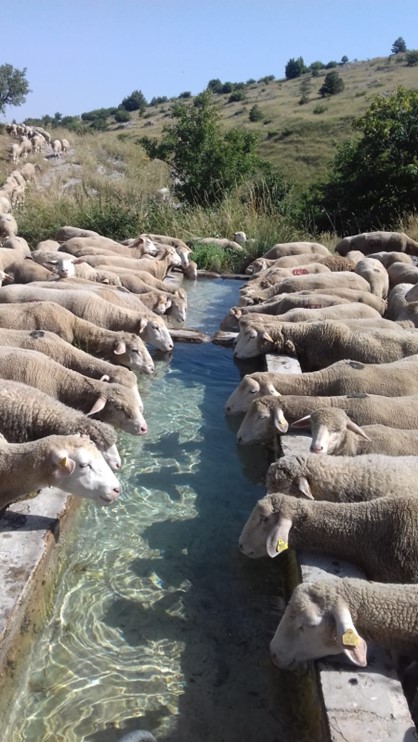
Angiolina’s herd and trough
During the process of restoring these troughs, Angiolina stumbled upon a surprise. She discovered that her sheep, as well as herself, might be sharing the trough water with small, elusive creatures unfamiliar to her—newts. Little did she realise the profound impact these newts would have on her sheep herding endeavours.
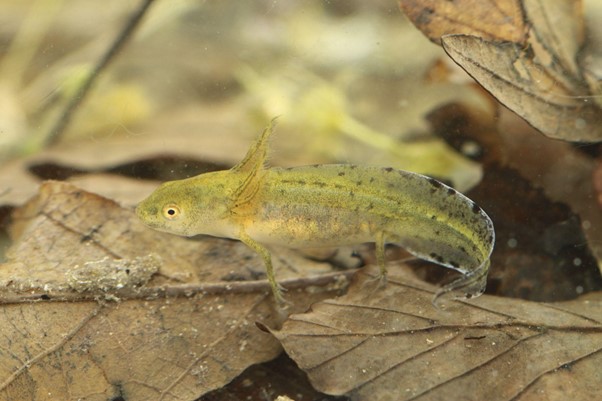
Newts are small, semi-aquatic amphibians related to salamanders. They bear a resemblance to a hybrid of frogs and lizards. Some newt species are known for releasing toxins through their skin and possessing the remarkable ability to regenerate lost limbs and organs. Due to factors such as habitat loss, fragmentation, and pollution, newts have received protection status under the Bern Convention and the EU Habitats Directive.*
Unfortunately, for Angiolina, man-made troughs have been designated as habitats for newts, as well as other amphibians. Even some of the restoration and maintenance practices that Angiolina initiated, such as removing grass and leaves that grew at the bottom of the trough, could potentially harm newts during certain times of the year. Consequently, it is crucial for both humans and non-humans, such as shepherds and sheep, to coexist harmoniously in shared habitats.
Inspired by the triumvirate of Angiolina, her sheep, and the newts, I conceptualised a project for them. This aimed at supporting the shepherd first in retracing her existing relationships with other species and the environment, and then at improving them, as in the case of the elusive newts that Angiolina’s herd shared the trough with. To facilitate this endeavour, I developed a smartphone app that could accompany users, like Angiolina, in the field and assist them in identifying and documenting their interactions with the environment and other species. Furthermore, the app would encourage users to seek out and document other species that share their habitat. In Angiolina’s case, the app would prompt her to locate and record newts, even during the egg phase or when concealed in mud. It would also provide guidance, e.g., to conduct an environmental DNA analysis (eDNA) of the water trough. Importantly, all this data would be stored within the app and, ultimately, in the cloud, making it accessible for researchers over time.
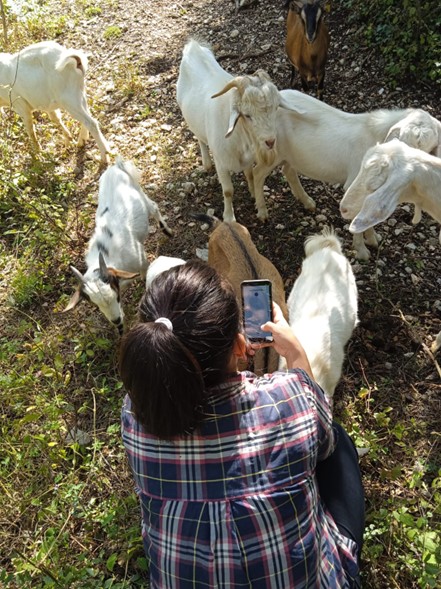
The “Ecological relationships” smartphone app and its users
An initial beta version of the “Ecological relationships” smartphone app is available today. If you would like to try it out and share any ideas on how it could be used or extended, please get in touch. You can use the app online at ecologicalrelationships.sandbox.noodl.app or scan the QR code below.

Scan to view Laura’s “Ecological relationships” smartphone app
* This is a detailed overview of the existing regulation on the protection status of the species present in Abruzzo: Lissotriton italicus is included in Appendix IV to the EU Habitats Directive and in the Appendix II to Bern Convention; Lissotriton vulgaris meridionalis is included in the Appendix III to the Bern Convention; Triturus carniflex is included in Appendix II and IV of the EU Habitats Directive and in the Appendix II to the Bern Convention.
